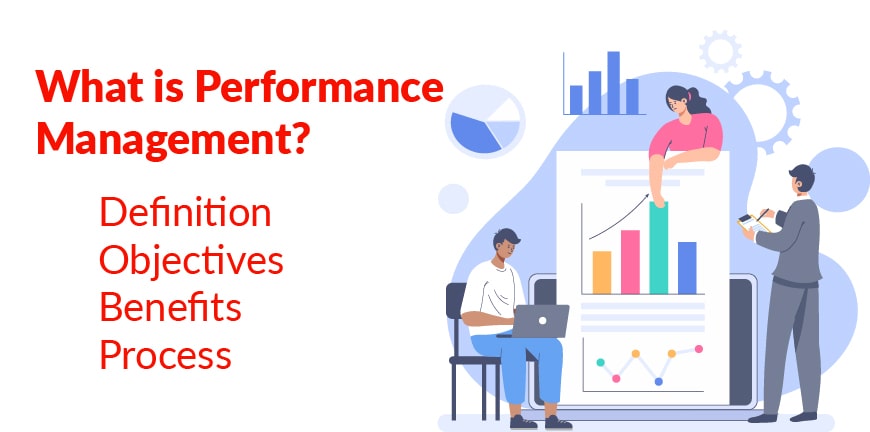
What is Talent Mapping? Definition, Benefits, Challenges
11/05/2024
What is Workforce Management?
15/05/2024It is quite natural when work motivates you and you derive enjoyment from it, missing the work that you do becomes a cause for fear or even a lack of joy. Every employee has been there! Despite a lot of talk even by HR about work-life balance, life does take a backseat and a lot of honest employees feel this way.
Honest employees are the pillars of a company and help define the company culture. And perhaps this is one reason you shouldn’t let them go. Another reason are their productivity and skill levels. They could be immensely useful to you in a position that demands higher expertise or experience. Internal mobility is key to growing an organization.
What is Internal Mobility?
Internal mobility is the process of moving employees to newer and more strategic roles within the company. For internal mobility to work, there needs to be an internal mobility strategy. Such a strategy moves the employees within the organization laterally or vertically, by providing them additional training for the new role if required.
What are the Benefits of Internal Mobility?
1. Talent retention
Internal mobility helps reduce attrition by giving employees the chance to upskill themselves and move to a position where their skills would be put to better use. The employer’s reputation improves too.
2. Cost-cutting
Internal mobility programs help avoid additional costs incurred by way of hiring new employees, especially those with new and in-demand skills. There’s also the disadvantage they may opt for another company and wouldn’t be familiar with the company culture.
3. Growth culture
A cultural cohesion is existent within the company, employees understand each other better and grow with each other too. In case of challenges, they support each other too, enabling everyone to come out of a problem stronger than before.
4. Saves Time
Hiring someone internally also saves a lot of time, otherwise spent in sourcing, testing and onboarding new candidates, especially if it is for a leadership position, where the candidate would also need to be trained in company culture.
11 Skills of Employees for Internal Mobility
1. Takes responsibility proactively
Those employees who you are good for promotion are those who you can entrust to get the job done. They do not give excuses, instead take proactive steps to get the work done as soon as possible. Also, it is not about working overtime or skipping lunches, it is about making a meaningful contribution to the organization’s shared goals.
2. Is solution-oriented
When you look for employees who are internally mobile, it is important to consider those who are solution-focussed and try to find solutions to existing problems. You must not consider those who only come to you with their concerns or problems. Also, people who offer solutions may not have the right solutions immediately, so select those people who keep trying and eventually succeed in finding a solution, no matter how tough the problem.
3. Is respected by co-workers
The employees already respect them. The team stands by them, and they give a special energy when they are around, helping the team succeed. It is not necessary that a well-liked employee would also be respected, so focus only on respect and not just popularity, though a highly respected employee is likely to be popular as well.
4. Supports others
A candidate who is internally mobile must be very supportive, especially if hiring for a senior position. They should have helped others, peers or subordinates come up with solutions to problems at work. But this must not be at the cost of their own work or productivity. A good mentor or a great guide is always great for another position within the company, as long as they meet their own KRAs and fulfil their individual goals and are happy at work.
5. Handles stress well
Stress is not always negative. In management and leadership, stress is an integral part of functioning well. In fact, good managers and leaders handle stress very well and actually thrive on it. They help other people also work well in a stressful environment and your entire workplace benefits from it. When considering potential internal hires, look at how they handle stress and conflict, and analyse how an increase in responsibilities could affect them.
6. Has reasonable demands
Make sure that the employee shares the organizational vision and is cognizant of the organization’s mission. And in knowing this, they make only reasonable demands when asked to move internally and don’t burden you with a very unreasonable offer which includes benefits you will not really be able to provide. It’s good to retain and promote a great employee, but make sure they are practical as well.
7. Is confident of abilities
The internal hire must be confident of his/her abilities. They must not second guess themselves. Generally, in a new role, there are a lot of responsibilities, something the internal hire must be capable of handling. One thing that can help them overcome stress and solve problems proactively is a lot of confidence, and speaking of which, even a bit of overconfidence is okay as well!
8. Can think creatively
Often problems one encounters at work cannot be handled in a logical manner. Sometimes an entirely different viewpoint needs to be considered. Thinking outside the box requires employees to have an open mind, respect another’s ideas and proactively learn from them, while not losing track of their own.
9. Can inspire others and plays well in a team
The employee must be a team player. People who are highly functioning, especially when working as part of a team, are real assets for the company. They set the right example for others to follow and confirm the good judgement of the management that showed faith in them, to begin with. The company itself becomes more confident and can take the occasional risks.
10. Is very trustworthy
The internal hire must be trustworthy and believe that the company’s purpose is to achieve something meaningful. She must have faith in the company’s methods and stand by them in the face of challenges. She should be brave enough to question when things are not working out but co-operate with others who are working towards propelling the company to growth.
11. Consistently performs well
Without the will, there is no way. Ambition is necessary for growth, as an organization and as individuals. But it is also necessary to perform well. Organizations must look for both in an internal hire. Overperforming employees must not only be rewarded but also be promoted and for this to happen, the organization must also have a fool-proof and error-free performance management system.
Handling Internal Mobility
1. Assess employee performance
Make sure you assess the employee’s performance in the right way. You must look at metrics such as innovation, productivity, accuracy etc. but also at the emotional impact work has on the employee and how well he performs under stress or when unexpected challenges are presented before them.
2. Evaluate employee readiness
Evaluate how ready the employee is for transfer based on motivation and adaptability. Use surveys or psychometric testing to understand if the employee is open to new challenges and responsibilities and use interviews to understand how accountable and honest they can be. Also, consider the current workload, responsibilities, and commitments and how they are performing in their current team.
3. Support the transition
Help the employee assume the new role with as little friction as possible. Handover of the documents, contracts, and tasks from one to the next must be done without any confusion. Follow up with the employee to ensure that they are satisfied and performing well in their new job. Offer them any training or coaching they may need to do well.
Just a Guide and Not Set in Stone
Please note that this article summarizes the 11 great qualities of an internal hire. Every internal hire need not excel in these qualities. Even if they have these qualities in good measure, you must try to opt for them.
Similarly, there could be other ways to initially assess internal mobility and handle the transition of the employee better. Have you tried something remarkably different in your organization? We would love to hear from you. Looking for a partner to hire effectively? Talk to Alp Consulting and let us help you!
Contact Us For Business Enquiry

Rajkumar Shanmugam
Rajkumar Shanmugam is the Head of HR at ALP Consulting, bringing over 19 years of comprehensive HR leadership experience across India and international markets. His expertise spans talent acquisition, employee relations, performance management, compliance, and HR transformation. Rajkumar has a proven track record of driving people-centric initiatives, enhancing workplace culture, and aligning HR strategy with business goals. With extensive experience in US staffing operations and global mobility, he continues to lead organizational excellence through innovation and employee engagement.




